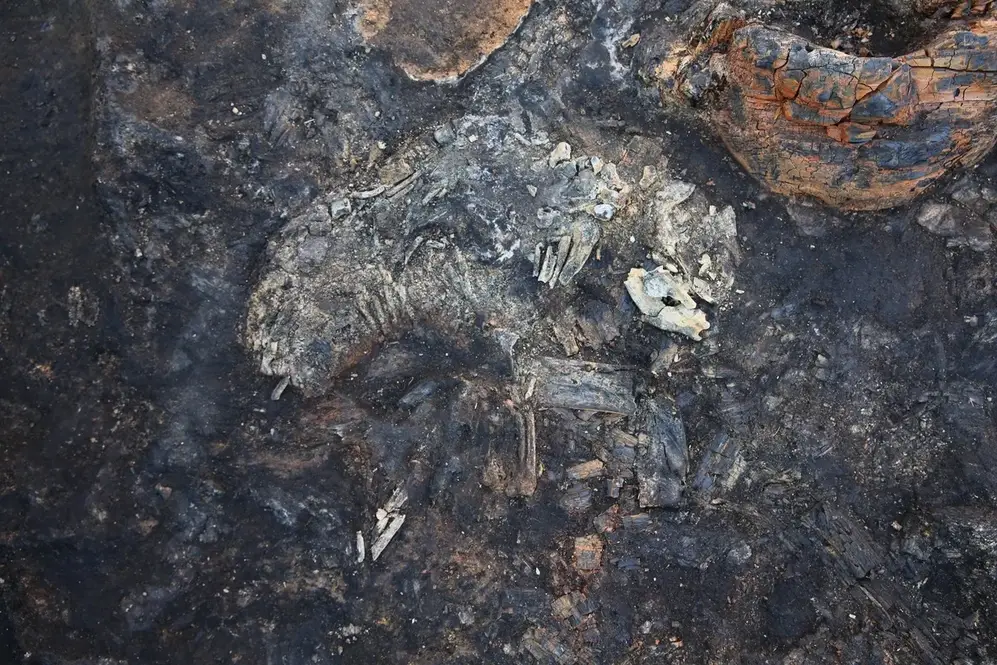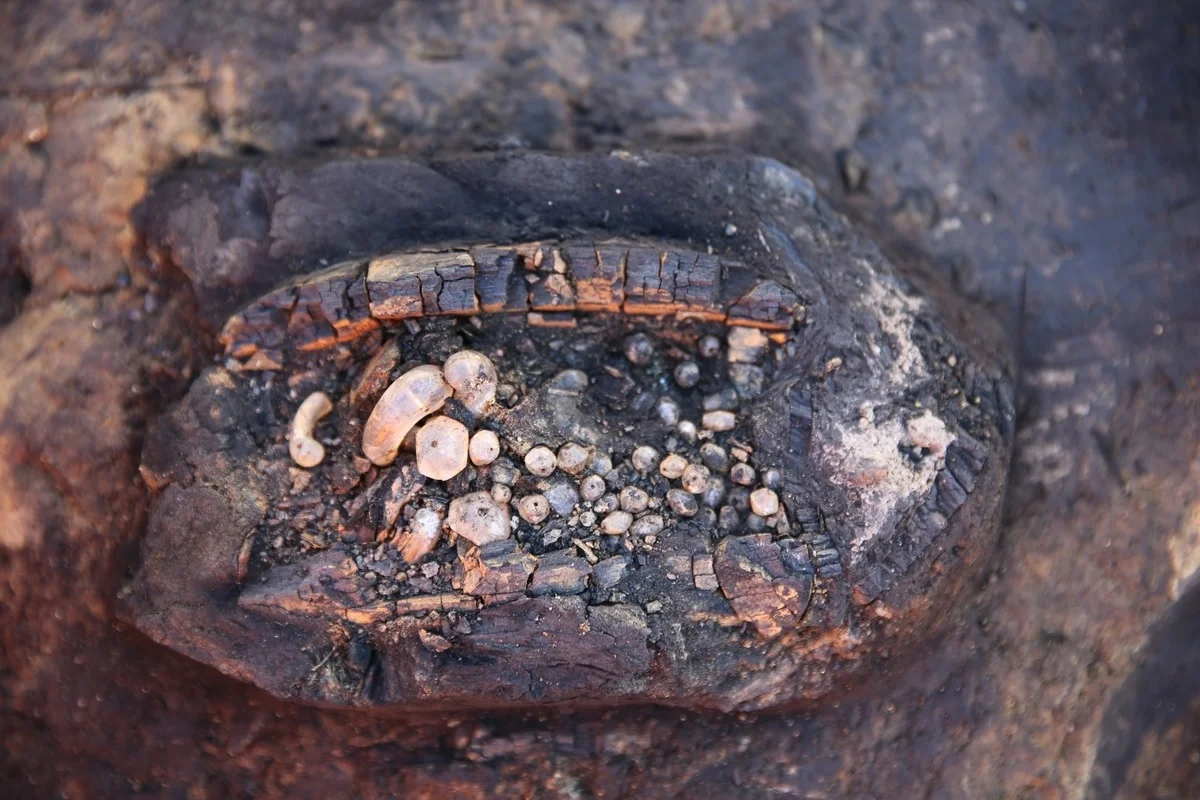Unveiling a Ritualistic Past
Archaeologists have uncovered evidence of dog sacrifices near Wolseong Palace, an ancient royal residence of the Silla Kingdom, located in present-day Gyeongju, South Korea. Silla, one of Korea’s Three Kingdoms, thrived from 57 BC to AD 935, with its capital, Seorabeol (modern Gyeongju), hosting a fortified palace complex shaped like a crescent moon, known as Banwolseong.
Previous excavations at the palace’s main entrance had revealed human and animal remains, believed to be part of sacrificial rituals conducted during its construction. Now, a recent discovery has shed new light on these ancient ceremonies.
Discovery of Dog Sacrifices
During a recent press event, the Korea Heritage Service announced the finding of a circular structure containing dog bones and various artifacts. This site was located on the outskirts of an ancient village southwest of the palace.
Kim Heon-seok, a zooarchaeology specialist at the National Research Institute of Cultural Heritage in Gyeongju, explained that the remains of two dogs were symmetrically positioned on either side of the structure, suggesting a ritualistic placement.
A Gruesome Fate and Symbolic Offerings
Detailed examination of the remains indicated that both dogs suffered fatal blunt-force trauma. Alongside them, archaeologists discovered a collection of ritual objects, including a knife, a wooden comb, shark teeth, and a crystal necklace placed inside a wooden box.
Analysis of the pottery and other excavated relics confirmed that the site and its sacrificial activities date back to the 3rd century BC. Evidence suggests that the area was set ablaze following the ritual, possibly as part of a ceremonial conclusion.
Context Within Saro-guk and the Silla Kingdom
During the 3rd century BC, this region was part of Saro-guk, a small state within the 12-member Jinhan confederacy. According to Samguk Sagi, Silla was founded in 57 BC by Bak Hyeokgeose, who united the clans of Jinhan under his rule.
Lee Jong-hoon, director of historical relics policy at the National Heritage Administration, emphasized the significance of the discovery, stating: “We have reached a stage where we can analyze Silla both historically and academically. This finding provides a fresh perspective on the kingdom’s past.”
Image Credit : Korea Heritage Service
A Glimpse Into Silla’s Rituals
This remarkable discovery offers new insights into the ritualistic practices of early Silla society, highlighting the deep spiritual and cultural traditions of the time. As further research unfolds, archaeologists hope to unlock more secrets from this ancient civilization.








